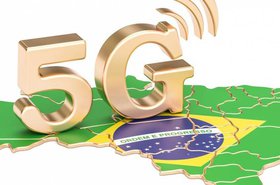The Christmas morning Nashville bombing disrupted wireless services, including that of the First Responder Network Authority.
The suicide attack was carried out directly in front of AT&T's central office facility, but it is not known if the telecoms company was intentionally targeted. Suspected bomber Anthony Quinn Warner sent letters to local media claiming baseless conspiracy theories, including that the moon landing and 9/11 were faked.
Federal agents are investigating whether he also believed in groundless 5G conspiracy theories, some of which claim the new telecoms technology causes Covid-19 (despite the virus being prevalent in countries without 5G).
Digital infrastructure may become terrorist targets
The bombing immediately impacted the Internet, phone, and wireless services of all major carriers in the local area, as well as the wider region.
The explosion caused significant damage to the AT&T building on 2nd Avenue, although thankfully no one was killed beyond Warner as he had issued a warning before his attack.
The bomb damaged multiple floors, with the explosion tearing through the building’s façade, beams and columns, and elevators. Commercial power connections were severed, while two local water mains were destroyed, causing severe flooding in the building's lower floors.
The building was evacuated on Friday 25, and again the next day when a fire reignited overnight. Technicians drilled access holes into the building to reconnect power to critical equipment via external generators on the 26th, while technical teams began rerouting services to other facilities.
By the 27th, power was restored to four floors, and three feet of water was pumped out from the basement, but it was still deemed off-limits. Technicians also began working on fixing the cooling equipment so that temperatures at the facility could be managed as it came back online.
By Tuesday, December 29, the local utility had restored commercial power to the building. The facility is still undergoing repairs, and it will be some time before it reaches full service.
The site is also home to a crucial part of the FirstNet network, the nationwide, wireless public-safety broadband network operated by AT&T. It was not directly hit by the explosion, but as its connection to the grid was severed, however, so the system shifted over to temporary battery power.
The plan was then to shift to backup power generators, but they were quickly flooded by the destroyed water mains. This rendered them inoperable before the facility could reroute all services to other locations.
Five hours after the blast, and four hours after the batteries died, FirstNet brought new assets online that restored services. Its deployable assets function like self-contained mobile cell towers and link to FirstNet via satellite.
“The purpose of FirstNet is to provide connectivity to first responders regardless of conditions or circumstances, and that places a heavy burden on the Authority and AT&T, the service provider, to deliver the most resilient network achievable," FirstNet Authority Board Chair Tip Osterthaler said.
"As we absorb the lessons learned from this attack, we will adjust our risk management and investment strategies as appropriate to deal with the changing threat environment. We are thankful that the only fatality from the bomb was apparently the bomber, and we are also thankful for the first responders, utility crews, and AT&T personnel who rushed to the scene on Christmas morning in order to protect lives and property and restore services."
Similar systems were used to bring the wider AT&T network back online, with 65 percent of services restored within two days.
"What has made network restoration so difficult is doing it while maintaining the integrity of an active crime scene in cooperation with federal and local law enforcement," AT&T CEO Jeff McElfresh said.
"Hundreds of employees - our own AT&T employees as well as first responders - have stepped in over the last two days to restore service. We’ve restored power to multiple floors in the building and deployed over 25 temporary satellite cell towers and 24 additional trailers of disaster recovery equipment across the impacted area."
In early 2020, the Department of Homeland Security wrote in an intelligence report seen by ABC that "conspiracy theories linking the spread of Covid-19 to the expansion of the 5G cellular network are inciting attacks against the communications infrastructure globally and that these threats probably will increase as the disease continues to spread, including calls for violence against telecommunications workers.
“Violent extremists have drawn from misinformation campaigns online that claim wireless infrastructure is deleterious to human health and helps spread Covid-19, resulting in a global effort by like-minded individuals to share operational guidance and justification for conducting attacks against 5G infrastructure, some of which have already prompted arson and physical attacks against cell towers in several US states."




